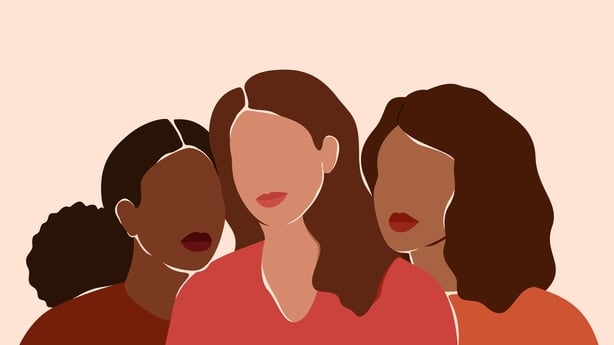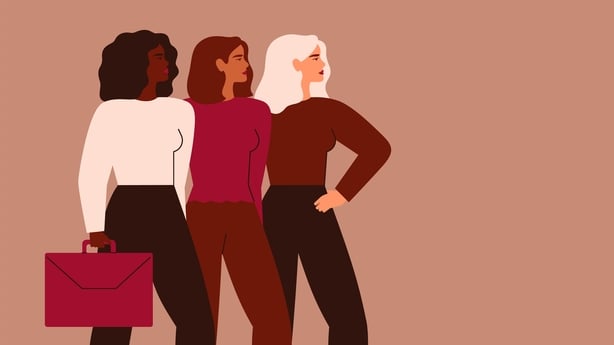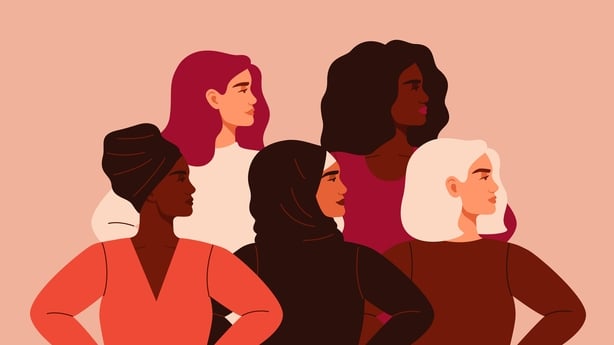In 2004, broadcaster Sandi Toksvig penned an article for The Guardian that confronted the phrase 'necessity is the mother of invention’ for its failure to consider that the inventor may well be a mother themselves.
Recounting an experience from her days studying anthropology at university, Toksvig recalls her professor holding up a photograph of an antler bone with 28 markings on it and telling those gathered that this is alleged to be man’s first attempt at a calendar.
"Tell me," the professor continued, "what man needs to know when 28 days have passed? I suspect that this is a woman's first attempt at a calendar."

It’s no secret that we’re living in a man’s world, and that pretty much every structure society operates within has been put in place by the patriarchy. However, as more women are elected into positions of power and we’re seeing greater variety of visibility within the areas of politics, STEM, and mainstream media, a misconception is creeping in that gender equality has already been won.
Though we may be making strides in the right direction, there is an insidiousness to widely accepted and thoroughly ingrained practices that we don’t even realise are crafted with only men in mind. Take our daily routines, for instance, and the 9 to 5 working day.
The human body runs on a 24-hour internal clock, known as the circadian rhythm, which regulates our sleep-wake cycle. Basically, it makes sure that our bodily processes are optimised at peak times throughout the day, and is heavily influenced by external cues like sunrise and sunset. In general, the same basic hormones can be found in both men and women, but their levels fluctuate in hugely different ways.
For men, testosterone and cortisol levels peak first thing in the morning, leading to heightened focus, higher energy, and greater feelings of confidence. As the day continues, hormone levels dip slightly, which means that the time has come to refuel and engage in some positive socialisation. Once achieved, motivation and productivity continue to be the priorities until testosterone reaches its lowest point, and a quest for calmness and recharge sets in.
So essentially, the traditional working day has been designed to cater to the needs of the working man, whose hormone cycle is consistent with that of the sun. The female hormone cycle, on the other hand, is much more consistent with that of the moon, fluctuating through many different phases that often leave us feeling fatigued when operating within the confines of a 9 to 5 productivity cycle.

Those who menstruate, usually between the ages of 12 and 51, also operate from another internal clock referred to as an infradian rhythm. Spanning the 28-day menstrual cycle, the phases we move through are menstruation, follicular, ovulatory and luteal phase, and throughout the course of the month, energy levels, metabolism, immune system and mood can all be affected.
Week to week, people operating on an infradian rhythm are likely to feel physically, mentally and emotionally different based on where they are in their cycle. Just as men’s energy and hormone levels rise and fall throughout the day, women experience those same fluctuations throughout the month.
Premenstrual tension, moodiness, cramps, headaches, tenderness in breasts, the hangovers of being a woman are felt by 51 per cent of the population, yet we continue to attempt to thrive within a working system that doesn’t even have menstrual health policies in place, regardless of the fact that over 70 per cent of women have needed to take time off work due to period pain.

In 2019, British author, journalist and activist, Caroline Criado-Perez wrote a book entitled Invisible Women: Exposing Data Bias in a World Designed for Men, in which she provides an incredibly well-researched account of the gender biases that range from the inconvenient to the deadly.
Beginning her research after she found that medical information surrounding heart attacks was based purely on the symptoms displayed in male patients, resulting in early warning signs in female cases being considered atypical, Criado-Perez’s work shines a light into the female-shaped gaps across the board.
In an interview with the BBC, she said, "We are so used to thinking of men as the default and women as the sort of niche - a variety of man." So much of the world around us has been built for this hypothetical man, from the phones we hold in our hands to the cars we drive home in.
Cars were not built for women. For a long time, test dummies were based on the average male body, which meant female drivers had 47% higher chances of serious injury than their male counterparts. Even now, the female dummy is usually just a smaller male dummy, but that doesn't 2/
— Karly (@kbarley66) January 15, 2021
Cirado-Perez uses the term ‘one-size-fits-men’ when referring to gender blindness in the tech world. The average smartphone measures between 5 and 6 inches long, and they’re only getting bigger with each new model released, making them too large for the average woman to comfortably hold in her hand, never mind fit in our pockets.
Just last year, a Twitter thread went viral pointing out a number of these injustices that go largely under the radar. "Cars were not built for women," Karly writes. "For a long time, test dummies were based on the average male body, which meant female drivers had 47% higher chances of serious injury than their male counterparts.
"Even now, the female dummy is usually just a smaller male dummy, but that doesn't account for differences in center of mass, different organ placements, etc. In addition, protective equipment doesn't account for seating differences (e.g. women typically sit closer to the wheel because of shorter legs)."
From CPR training mannequins not taking breasts into account to office temperatures being, on average, about five degrees too cold for female employees, we’re still very much living in a man’s world.
The views expressed here are those of the author and do not represent or reflect the views of RTÉ.

